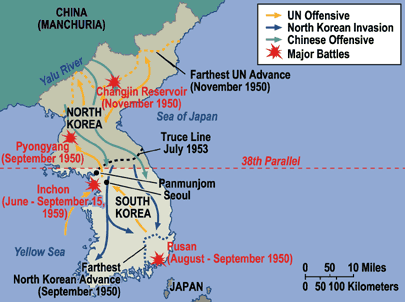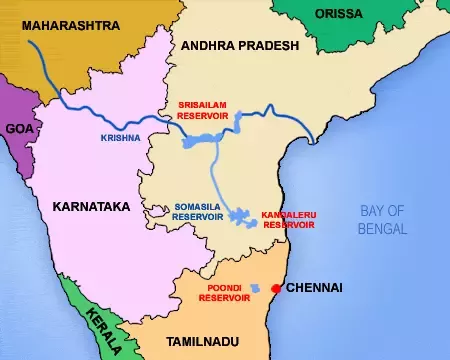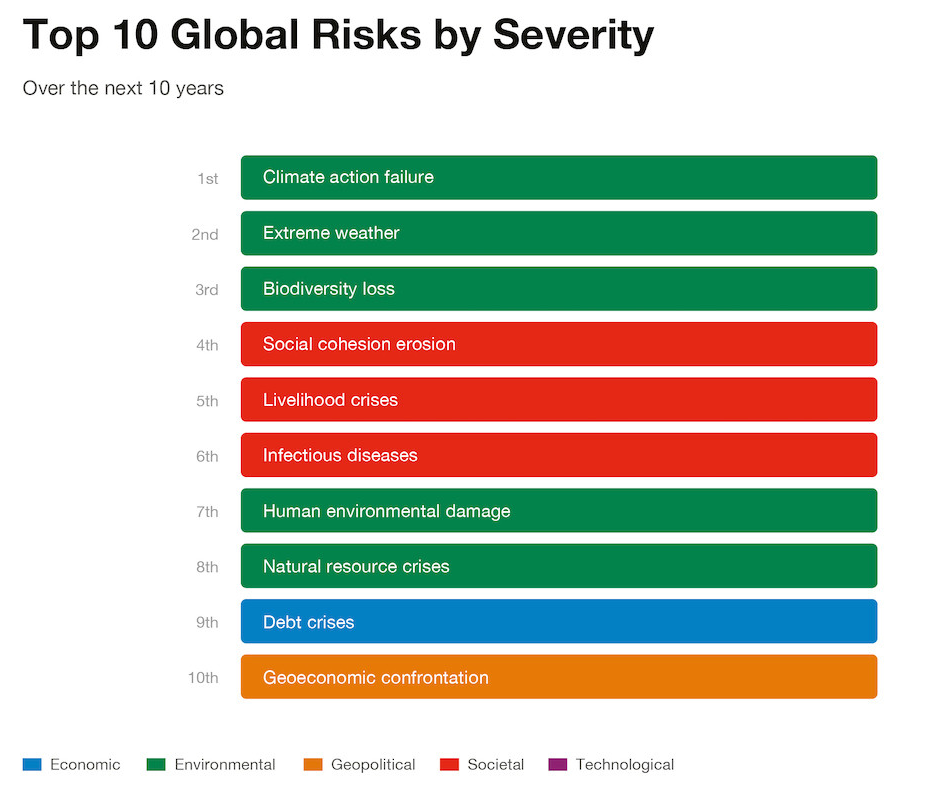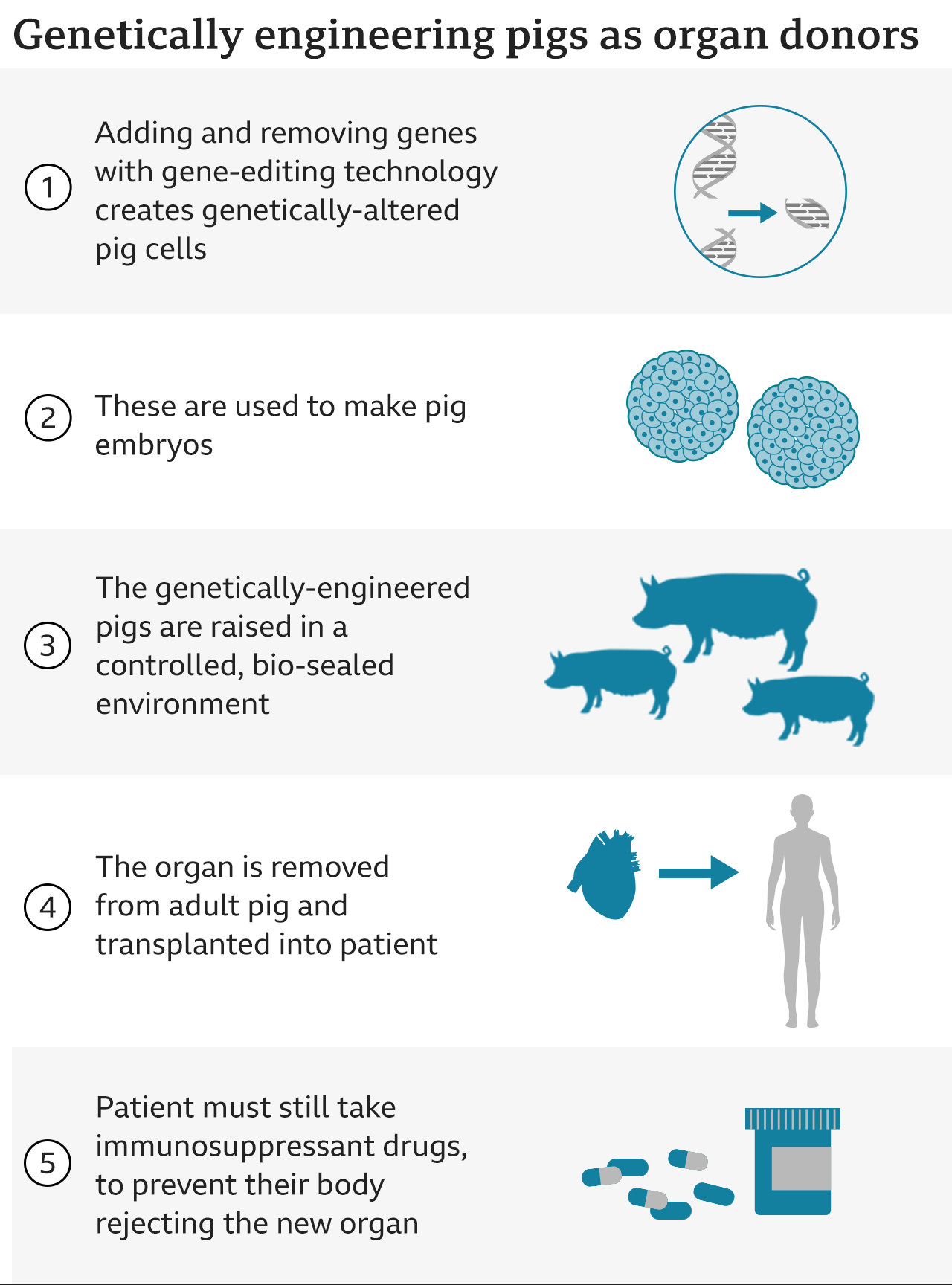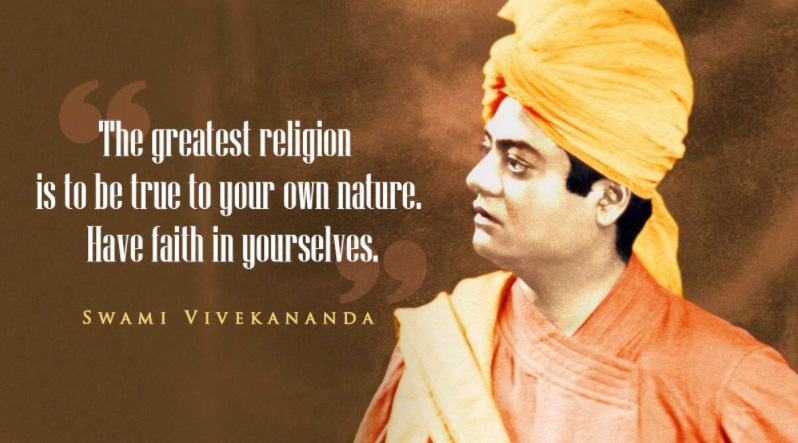International Relations
American Sanctions Over North Korea
For Prelims: North Korean missile launches, 38th parallel, Korean Armistice Agreement.
For Mains: Korean War, Korean Armistice Agreement , Cold War, Non-Proliferation Treaty (NPT) in 2003, THAAD (Terminal High Altitude Area Defence), American Sanctions Over North Korea.
Why in News
Recently, the US has imposed its first sanctions over North Korea’s weapons programs following a series of North Korean missile launches.
- These sanctions were aimed both to prevent the advancement of North Korea’s programs and to impede its attempts to proliferate weapons technologies.
- North Korea is continuing its missile program despite several UN Security Council resolutions and the international community’s calls for diplomacy and denuclearization.
Key Points
- Origin of Divide in Korean Peninsula:
- The present-day conflict between the US and North Korea can be traced from the Cold War between the USSR and US.
- After the defeat of Japan in World War II, the Allied forces at the Yalta Conference (1945), agreed to establish a “four-power trusteeship over Korea”.
- The fear of the spread of communism (state ownership over economic resources of a country) and the mutual distrust between the USSR and the US led to the failure of the trusteeship plan.
- Before a concrete plan could be formulated, the USSR invaded Korea.
- This led to a condition where the north of Korea was under the USSR and the south under the rest of the allies, mainly the US.
- The Korean peninsula was divided into two regions by the 38th parallel.
- In 1948 the United Nations proposed free elections across all of Korea.
- The USSR rejected this plan and the northern part was declared as Democratic People’s Republic of Korea (North Korea).
- The election took place in the American protectorate resulting in the establishment of the Republic of Korea (South Korea).
- Both North Korea and South Korea tried to enhance their reach, territorially and ideologically, which gave birth to the Korean Conflict.
- The Korean War:
- On 25th June 1950, North Korea, backed by the USSR, launched an attack on South Korea and occupied most of the country.
- In response, the United Nations force led by the US retaliated.
- In 1951 the US forces led by Douglas MacArthur crossed the 38th parallel and triggered the entry of China in support of North Korea.
- To prevent further escalation, peace talks began later in 1951.
- India was actively involved in negotiating peace in the Korean peninsula by engaging all the major stakeholders – US, USSR and China.
- In 1952, the Indian resolution on Korea was adopted at the United Nations (UN).
- On 27th July 1953, the Korean Armistice Agreement was signed between the UN Command, the Korean People's Army and the Chinese People's Volunteer Army.
- It led to an official ceasefire without a Peace treaty. Thus, the war officially never ended.
- This also led to the establishment of the Korean Demilitarised Zone (DMZ) – a strip of land running across the Korean Peninsula to serve as a buffer zone between North Korea and South Korea.
- In December 1991, North and South Korea signed a pact agreeing to refrain from aggression.
- On 25th June 1950, North Korea, backed by the USSR, launched an attack on South Korea and occupied most of the country.
- US-North Korea Conflict:
- During the Cold War era, (allegedly with the support of Russia and China) North Korea accelerated its nuclear programme and developed nuclear capabilities.
- During the same time, the US extended its Nuclear Umbrella (guarantee of support during a nuclear attack) to its allies i.e South Korea and Japan.
- North Korea withdrew from the Non-Proliferation Treaty (NPT) in 2003 and afterwards, under present leader Kim Jong-un, it increased nuclear missile testing.
- North Korea is barred from testing ballistic missiles and nuclear weapons under international law.
- In response to this, the US started deploying THAAD (Terminal High Altitude Area Defence) in South Korea in March 2017.
- The territorial conflict which started between North and South Korea has transformed into a tussle between the US and North Korea.
- Following the failure of diplomatic efforts to improve relations with North Korea, the US has imposed sanctions.
- During the Cold War era, (allegedly with the support of Russia and China) North Korea accelerated its nuclear programme and developed nuclear capabilities.
- India’s Stand:
- India has consistently voiced its opposition to North Korean nuclear and missile tests. However, it has maintained a neutral stance regarding sanctions.

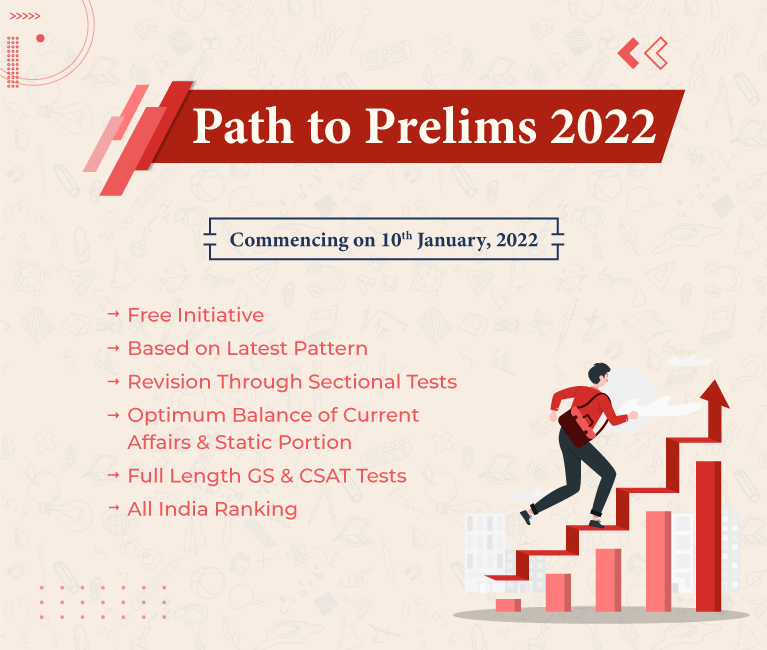
International Relations
Homeland Security Dialogue between India and US
For Prelims: Homeland Security Dialogue, QUAD, Four foundational defence agreements, Defence exercises, NISAR.
For Mains: Indo-US Defence and Security cooperation, Significance of Indo-US relations, Different aspects of India-US relations.
Why in News
Recently, a Homeland Security Dialogue was held between the officials of India and US.
- In October 2021 the Ministry of Defence signed a deal with the US Government for procurement of MK 54 Torpedo and Expendable (Chaff and Flares) for the Indian Navy, under Foreign Military Sale (FMS).
- In July 2021 the US Secretary of State visited India.
Key Points
- About:
- The Indo-US homeland security dialogue was launched in 2010 as the mechanism to a sequel to the signing of the India-US counter-terrorism initiative.
- First Homeland Security Dialogue was held in May 2011.
- The latest virtual meeting came after in March 2021, the US President Joe Biden administration had announced the re-establishment of the Homeland Security Dialogue which was discontinued by former US President Donald Trump’s administration.
- There are six sub-groups formed under the Indo-US homeland security dialogue which cover the areas of:
- Illicit finance, Financial fraud and counterfeiting.
- Cyber information.
- Megacity policing and sharing of information among federal, state and local partners.
- Global supply chain, transportation, port, border and maritime security.
- Capacity building.
- Technology upgradation.
- The Indo-US homeland security dialogue was launched in 2010 as the mechanism to a sequel to the signing of the India-US counter-terrorism initiative.
- India- US Relations:
- About:
- India-US bilateral relations have developed into a "global strategic partnership", based on shared democratic values and increasing convergence of interests on bilateral, regional and global issues.
- In 2015, both the countries issued a Delhi Declaration of Friendship and adopted a Joint Strategic Vision for Asia-Pacific and the Indian Ocean Region.
- Civil-Nuclear Deal:
- The bilateral civil nuclear cooperation agreement was signed in October 2008.
- Energy and Climate Change:
- As a priority initiative under the PACE (Partnership to Advance Clean Energy), the US Department of Energy (DOE) and the Government of India have established the Joint Clean Energy Research and Development Centre (JCERDC) designed to promote clean energy innovations by teams of scientists from India and the United States.
- India-US Clean Energy Agenda 2030 Partnership was launched at the Leaders climate summit 2021.
- Defence Cooperation:
- Defence relationship has emerged as a major pillar of India-US strategic partnership with the signing of ‘New Framework for India-US Defence Relations’ in 2005 which was further updated for 10 years in 2015.
- India and US inked important defence pacts in the last few years and also formalised the four nation alliance of QUAD (India, US, Japan and Australia).
- The alliance is seen as an important counter to China in the Indo-Pacific.
- The Malabar exercise in November 2020 portrayed a high point in Indo-US strategic ties, it was the first time in 13 years that all four countries of QUAD came together sending a strong message to China.
- India now has access to American bases from Djibouti in Africa to Guam in the Pacific. It can also access advanced communication technology used in US defence.
- India and US have four foundational defence agreements:
- Basic Exchange and Cooperation Agreement for Geospatial Intelligence (BECA).
- General Security of Military Information Agreement (GSOMIA).
- Logistics Exchange Memorandum of Agreement (LEMOA).
- Communication Compatibility and Security Agreement (COMCASA).
- India-US Counter-Terrorism Cooperation Initiative was signed in 2010 to expand collaboration on counter-terrorism, information sharing and capacity building.
- A tri-services exercise– Tiger Triumph- was conducted in November 2019.
- Bilateral and regional exercises include: Yudh Abhyas (Army), Vajra Prahar (Special Forces), RIMPAC, Red Flag.
- Trade:
- The US is India’s second largest trading partner and a major destination for India’s exports of goods and services.
- The US replaced Mauritius as the second largest source of foreign direct investment into India during 2020-21.
- The previous US government ended India’s special trade status (GSP withdrawal) and also imposed several bans, India also retaliated with bans on 28 US products.
- Current US government has allowed all the bans by the previous government to expire.
- Science & Technology:
- Indian Space Research Organisation and National Aeronautics and Space Administration (NASA) are working together to realise a joint microwave remote sensing satellite for Earth observation, named NASA-ISRO Synthetic Aperture Radar (NISAR).
- Indian Diaspora:
- There is a growing presence of Indian diaspora in all spheres in the US. For example the current Vice-President (Kamala Harris) of the US has a strong Indian connection.
- About:
Way Forward
- The stage has been set for transforming India’s partnership with the US. Afghanistan remains a key area of continuing concern for both India and the US and both sides are now looking at the bigger challenges emerging in the Indo-Pacific, driven by the rise and assertion of China.
- There is a huge potential to boost bilateral trade between the countries especially on account of increasing anti-China sentiment in both the nations.

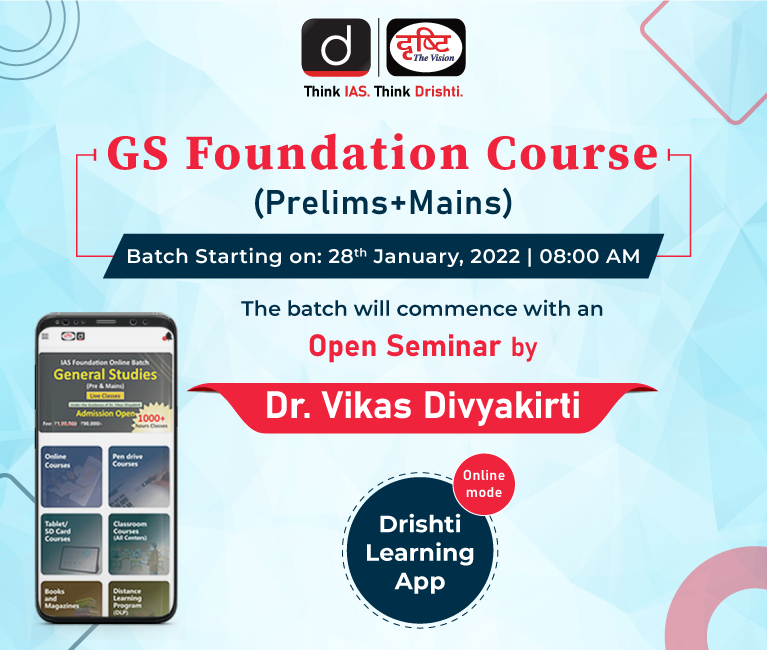
Governance
Krishna Water Dispute
For Prelims: Constitutional Provisions of Inter Water River Disputes, Krishna River and its tributaries, location of Nallamala hills.
For Mains: Krishna Water Dispute challenges and Way Forward, Recusal of Judges.
Why in News
Recently, two judges of the Supreme Court have recused themselves from hearing a matter related to the distribution of Krishna water dispute between Andhra Pradesh, Telangana, Maharashtra and Karnataka.
- They cited the reason that they did not want to be the target of partiality since the dispute is related to their home states.
Recusal of Judges
- It is the act of abstaining from participation in an official action such as a legal proceeding due to a conflict of interest of the presiding court official or administrative officer.
- When there is a conflict of interest, a judge can withdraw from hearing a case to prevent creating a perception that he carried a bias while deciding the case.
- There are no formal rules governing recusals, although several SC judgments have dealt with the issue.
- In Ranjit Thakur v Union of India (1987), the SC held that the test of the likelihood of bias is the reasonableness of the apprehension in the mind of the party.
- The judge needs to look at the mind of the party before him, and decide that he is biassed or not.
Key Points
- About:
- In 2021 Andhra Pradesh alleged that the Telangana government had deprived it of its legitimate share of water for drinking and irrigation purposes in an “unconstitutional and illegal” manner.
- The water of the Srisailam reservoir — which is the main storage for river water between the two states — has turned out to be a major warring point.
- Andhra Pradesh protested against Telangana’s use of the Srisailam reservoir water for power generation.
- The Srisailam reservoir is constructed across the Krishna River in Andhra Pradesh. It is located in the Nallamala hills.
- It further contended that Telangana was refusing to follow decisions taken in the apex council constituted under the Andhra Pradesh Reorganisation Act, 2014, directions of Krishna River Management Board (KRMB) constituted under this Act and directions of the Centre.
- Background:
- Krishna Water Disputes Tribunal:
- In 1969, the Krishna Water Disputes Tribunal (KWDT) was set up under the Inter-State River Water Dispute Act, 1956, and presented its report in 1973.
- At the same time, it was stipulated that the KWDT order may be reviewed or revised by a competent authority or tribunal any time after 31st May, 2000.
- Second KWDT
- The second KWDT was instituted in 2004. It delivered its report in 2010, which made allocations of the Krishna water at 65 % dependability and for surplus flows as follows: 81 TMC for Maharashtra, 177 TMC for Karnataka, and 190 TMC for Andhra Pradesh.
- After the KWDT’s 2010 report:
- Andhra Pradesh challenged it through a Special Leave Petition before the Supreme Court in 2011.
- In 2013, the KWDT issued a ‘further report’, which was again challenged by Andhra Pradesh in the Supreme Court in 2014.
- Creation of Telangana:
- After the creation of Telangana, Andhra Pradesh has asked that Telangana be included as a separate party at the KWDT and that the allocation of Krishna waters be reworked among four states, instead of three.
- It is relying on Section 89 of The Andhra Pradesh State Reorganisation Act, 2014.
- For the purposes of this section, it is clarified that the project-specific awards already made by the Tribunal on or before the appointed day shall be binding on the successor States.
- After the creation of Telangana, Andhra Pradesh has asked that Telangana be included as a separate party at the KWDT and that the allocation of Krishna waters be reworked among four states, instead of three.
- Krishna Water Disputes Tribunal:
- Constitutional Provisions:
- Article 262 of the Constitution provides for the adjudication of inter-state water disputes.
- Under this, Parliament may by law provide for the adjudication of any dispute or complaint with respect to the use, distribution and control of waters of any inter-state river and river valley.
- The Parliament has enacted the two laws, the River Boards Act (1956) and the Inter-State Water Disputes Act (1956).
- The River Boards Act provides for the establishment of river boards by the Central government for the regulation and development of inter-state river and river valleys.
- The Inter-State Water Disputes Act empowers the Central government to set up an ad hoc tribunal for the adjudication of a dispute between two or more states in relation to the waters of an inter-state river or river valley.
- Neither the Supreme Court nor any other court is to have jurisdiction in respect of any water dispute which may be referred to such a tribunal under this Act.
- Article 262 of the Constitution provides for the adjudication of inter-state water disputes.
Krishna River
- Source: It originates near Mahabaleshwar (Satara) in Maharashtra. It is the second biggest river in peninsular India after the Godavari River.
- Drainage: It runs from four states Maharashtra (303 km), North Karnataka (480 km) and the rest of its 1300 km journey in Telangana and Andhra Pradesh before it empties into the Bay of Bengal.
- Tributaries: Tungabhadra, Mallaprabha, Koyna, Bhima, Ghataprabha, Yerla, Warna, Dindi, Musi and Dudhganga.
Way Forward
- The water disputes can be solved or balanced only by having a permanent tribunal established with appellate jurisdiction of the Supreme Court established over the tribunal’s decision.
- The immediate target of any Constitutional Government should be amendment to Article 262 and amendment to Inter-State Water Disputes Act and its implementation at the equal note.
- It is time that we all should rethink our strategy about water management, not just within states, but at the national level keeping the water scenario in the next 30 years.
- The channels of communication need to be improved desperately, in order to gain a consensus.
- The mechanism must improve in a manner that the body created by the Centre must adequately represent the states to protect their interests.
Indian Polity
Lok Adalat
For Prelims: Lok Adalat, NALSA
For Mains: Significance of Lok Adalat and related jurisdiction.
Why in News
Lok Adalat has emerged as the most efficacious tool of Alternative Dispute Resolution.
- A total number of 1,27,87,329 cases were disposed of in 2021. Due to technological advancement like E-Lok Adalats, Lok Adalats have reached the doorsteps of parties.
Key Points
- About:
- The term ‘Lok Adalat’ means ‘People’s Court’ and is based on Gandhian principles.
- As per the Supreme Court, it is an old form of adjudicating system prevalent in ancient India and its validity has not been taken away even in the modern days too.
- It is one of the components of the Alternative Dispute Resolution (ADR) system and delivers informal, cheap and expeditious justice to the common people.
- The first Lok Adalat camp was organized in Gujarat in 1982 as a voluntary and conciliatory agency without any statutory backing for its decisions.
- In view of its growing popularity over time, it was given statutory status under the Legal Services Authorities Act, 1987. The Act makes the provisions relating to the organization and functioning of the Lok Adalats.
- Organization:
- The State/District Legal Services Authority or the Supreme Court/High Court/Taluk Legal Services Committee may organize Lok Adalats at such intervals and places and for exercising such jurisdiction and for such areas as it thinks fit.
- Every Lok Adalat organized for an area shall consist of such number of serving or retired judicial officers and other persons of the area as may be specified by the agency organizing.
- Generally, a Lok Adalat consists of a judicial officer as the chairman and a lawyer (advocate) and a social worker as members.
- National Legal Services Authority (NALSA) along with other Legal Services Institutions conducts Lok Adalats.
- NALSA was constituted under the Legal Services Authorities Act, 1987 which came into force on 9th November 1995 to establish a nationwide uniform network for providing free and competent legal services to the weaker sections of the society.
- The Legal Services Authorities Act, 1987 was amended in 2002 to provide for the establishment of the Permanent Lok Adalats to deal with cases pertaining to the public utility services.
- Jurisdiction:
- A Lok Adalat shall have jurisdiction to determine and to arrive at a compromise or settlement between the parties to a dispute in respect of:
- Any case pending before any court, or
- Any matter which falls within the jurisdiction of any court and is not brought before such court.
- Any case pending before the court can be referred to the Lok Adalat for settlement if:
- Parties agree to settle the dispute in the Lok Adalat or one of the parties applies for referral of the case to the Lok Adalat or court is satisfied that the matter can be solved by a Lok Adalat.
- In the case of a pre-litigation dispute, the matter can be referred to the Lok Adalat on receipt of an application from any one of the parties to the dispute.
- Matters such as matrimonial/family disputes, criminal (compoundable offenses) cases, land acquisition cases, labor disputes, workmen’s compensation cases, bank recovery cases, etc. are being taken up in Lok Adalats.
- However, the Lok Adalat shall have no jurisdiction in respect of any case or matter relating to an offense not compoundable under any law. In other words, the offenses which are non-compoundable under any law fall outside the purview of the Lok Adalat.
- A Lok Adalat shall have jurisdiction to determine and to arrive at a compromise or settlement between the parties to a dispute in respect of:
- Powers:
- The Lok Adalat shall have the same powers as are vested in a Civil Court under the Code of Civil Procedure (1908).
- Further, a Lok Adalat shall have the requisite powers to specify its own procedure for the determination of any dispute coming before it.
- All proceedings before a Lok Adalat shall be deemed to be judicial proceedings within the meaning of the Indian Penal Code (1860) and every Lok Adalat shall be deemed to be a Civil Court for the purpose of the Code of Criminal Procedure (1973).
- An award of a Lok Adalat shall be deemed to be a decree of a Civil Court or an order of any other court.
- Every award made by a Lok Adalat shall be final and binding on all the parties to the dispute. No appeal shall lie to any court against the award of the Lok Adalat.
- Benefits:
- There is no court fee and if court fee is already paid the amount will be refunded if the dispute is settled at Lok Adalat.
- There is procedural flexibility and speedy trial of the disputes. There is no strict application of procedural laws while assessing the claim by Lok Adalat.
- The parties to the dispute can directly interact with the judge through their counsel which is not possible in regular courts of law.
- The award by the Lok Adalat is binding on the parties and it has the status of a decree of a civil court and it is non-appealable, which does not cause the delay in the settlement of disputes finally.


Governance
Challenges in India's Rooftop Solar Program
For Prelims: Schemes and programmes for Achieving Renewable Energy Target
For Mains: India's achievements in renewable energy sector, India's renewables energy targets, challenges and initiatives taken to achieve it.
Why in News
According to the data available on the website of the Union Ministry of New and Renewable Energy (MNRE), India could install just 6GW of Rooftop Solar (RTS) power by the end of October 2021 under the rooftop solar scheme.
- Although utility-scale solar has seen tremendous progress with leading players lining up for projects, tariffs spiralling down and government agencies pushing mega projects, RTS has continued to remain neglected.
Rooftop Solar
- Rooftop solar is a photovoltaic system that has its electricity-generating solar panels mounted on the rooftop of a residential or commercial building or structure.
- Rooftop mounted systems are small compared to ground-mounted photovoltaic power stations with capacities in the megawatt range.
- Rooftop PV systems on residential buildings typically feature a capacity of about 5 to 20 kilowatts (kW), while those mounted on commercial buildings often reach 100 kilowatts or more.
Key Points
- Rooftop Solar Scheme:
- The major objective of the scheme is to generate solar power through the installation of solar panels on the roof of the houses.
- Also, the Ministry of New and Renewable Energy has announced the implementation of Phase 2 of the grid-connected Rooftop Solar Scheme.
- The aim of the scheme is to achieve the final capacity of 40 GW from Rooftop Solar Projects by 2022.
The 40GW goal is part of India's ambitious target to achieve 175GW renewable energy (RE) capacity that includes 100GW of solar power by 2022.- According to a report released in September, 2021, the lockdowns slowed renewable energy installations in the country and the pace of such installations is lagging India’s 2022 target.
- Challenges:
- Flip-Flopping Policies:
- Although many companies began using solar energy, flip-flopping (sudden real or apparent change of policy) policies remained a major hurdle, especially when it came to power distribution companies (discoms).
- Industry executives point out RTS was becoming attractive for several consumer segments when discoms and state governments started tightening regulations for the sector.
- India's Goods and Service Tax (GST) Council recently hiked the GST of many components of the solar system from 5% to 12%.
- It will increase RTS's capital cost by 4-5%.
- Regulatory Framework:
- The growth of the RTS segment is highly dependent on the regulatory framework.
- Slow growth has been primarily caused by the absence or withdrawal of state-level policy support for the RTS segment, especially for the business and industrial segment, which makes up the bulk of target consumers.
- Inconsistent Rules on Net and Gross Metering:
- Net metering regulations are one of the major obstacles facing the sector.
- According to a report, Power ministry’s new rules that excludes rooftop solar systems above 10 kilowatts (kW) from net-metering would stall adoption of larger installations in India affecting the country’s rooftop solar target.
- The new rules mandate net-metering for rooftop solar projects up to 10 kW and gross metering for systems with loads above 10 kW.
- Net metering allows surplus power produced by RTS systems to be fed back into the grid.
- Under the gross metering scheme, state power Distribution Companies (DISCOMS) compensate consumers with a fixed feed-in-tariff for the solar power supplied to the grid by the consumer.
- Low Financing:
- Commercial, institutions, and residential sectors are keen to install grid-connected RTS by getting bank loans.
- The Union Ministry of New and Renewable Energy (MNRE) has advised banks to give loans for RTS at subsidised rates. However, nationalised banks hardly offer loans to RTS.
- Thus, many private players have come into the market that offer loans for RTS at higher rates like 10-12%.
- Flip-Flopping Policies:
Schemes for Promoting Solar Energy
- Kisan Urja Suraksha evam Utthaan Mahabhiyan (PM-KUSUM):
- The scheme covers grid-connected Renewable Energy power plants (0.5 – 2 MW)/Solar water pumps/grid connected agriculture pumps.
- Scheme for Development of Ultra Mega Renewable Energy Power Parks:
- It is a scheme to develop Ultra Mega Renewable Energy Power Parks (UMREPPs) under the existing Solar Park Scheme.
- National Wind-Solar Hybrid Policy:
- The main objective of the National Wind-Solar Hybrid Policy, 2018 is to provide a framework for promotion of large grid connected wind-solar PV hybrid systems for optimal and efficient utilisation of wind and solar resources, transmission infrastructure and land.
- Atal Jyoti Yojana (AJAY):
- The AJAY scheme was launched in September 2016 for the installation of solar street lighting (SSL) systems in states with less than 50% households covered with grid power (as per Census 2011).
- International Solar Alliance:
- The ISA, is an Indian initiative that was launched on the side-lines of the Conference of the Parties (COP-21), with 121 solar resource rich countries lying fully or partially between the tropic of Cancer and tropic of Capricorn as prospective members.
- One Sun, One World, One Grid (OSOWOG):
- It focuses on a framework for facilitating global cooperation, building a global ecosystem of interconnected renewable energy resources (mainly solar energy) that can be seamlessly shared.
- National Solar Mission : It is a part of the National Action Plan on Climate Change.
- Suryamitra Skill Development Programme: To provide skill training to rural youth in handling solar installations.
Way Forward
- The RTS needs easy financing, unrestricted net metering, and an easy regulatory process. Public Financial Institutions and other key lenders could be mandated to lend to the segment.
- Some of the existing bank lines of credit could be adapted to meet the challenges of the Indian RTS segment, making it more attractive to developers in this area.


Economy
Global Risks Report 2022
For Prelims: World Economic Forum, Energy Transition Index, Global Competitiveness Report. Global Gender Gap Report, Global Risk Report, Global Travel and Tourism Report
For Mains: Global Challenges, Impact of Covid-19, Environmental Risks, Technological Risks, International Risks.
Why in News
Recently, the Global Risks Report 2022, an annual report, was released by the World Economic Forum. It tracks global risk perceptions among risk experts and world leaders in business, government, and civil society.
- It examines risks across five categories: economic, environmental, geopolitical, societal, and technological.
Key Points
- Impact of Covid-19: The societal and environmental risks have worsened the most since the start of the pandemic.
- “Social cohesion erosion”, “livelihood crises” and “mental health deterioration” are three of the five risks seen as the most concerning threats to the world in the next two years.
- Apart from this, it has significantly contributed to “debt crises”, “cybersecurity failures”, “digital inequality” and “backlash against science”.
- Global Economic Outlook: It majorly perceived the short-term economic outlook to be volatile, fractured, or increasingly catastrophic.
- The most serious challenge persisting from the pandemic is economic stagnation.
- Environmental Risks: “Extreme weather” and “climate action failure”—appear as top risks in the short-, medium-and long-term outlooks.
- Governments, businesses, and societies are facing increasing pressure to transition to net-zero economies.
- Geopolitical and Technological Risks: In the longer-term horizon, geopolitical and technological risks are of concern too—including “geoeconomic confrontations”, “geopolitical resource contestation” and “cybersecurity failure”.
- International Risks: Artificial intelligence, space exploitation, cross-border cyberattacks and misinformation and migration and refugees were rated as the top areas of international concerns.
- Growing insecurity in the forms of economic hardship, worsening impacts of climate change and political persecution will force millions to leave their homes in search of a better future.
- The prospect of 70,000 satellite launches in coming decades, in addition to space tourism, raises risks of collisions and increasing debris in space, amid a lack of regulation.
World Economic Forum
- About:
- The World Economic Forum (WEF) is a Swiss nonprofit foundation established in 1971, based in Geneva, Switzerland.
- Recognized by the Swiss authorities as the international institution for public-private cooperation.
- Mission:
- Committed to improving the state of the world by engaging business, political, academic, and other leaders of society to shape global, regional, and industry agendas.
- Founder and Executive Chairman: Klaus Schwab.
- Some major reports published by WEF are:
- Energy Transition Index.
- Global Competitiveness Report.
- Global IT Report
- WEF along with INSEAD, and Cornell University publishes this report.
- Global Gender Gap Report.
- Global Risk Report.
- Global Travel and Tourism Report.
Important Facts For Prelims
Animal to Human Transplants (Xenotransplantation)
Why in News
Recently, in a medical first, doctors transplanted a pig heart into a patient in a last-ditch effort to save his life in the US.
Key Points
- About:
- Xenotransplantation involves the transplantation of nonhuman tissues or organs into human recipients.
- This is the first successful transplant of a pig’s heart into a human being. However, it’s too soon to know if the operation really will work.
- This time, a heart from a pig that had undergone gene-editing has been used to remove a sugar in its cells that’s responsible for that hyper-fast organ rejection.
- Genome editing (also called gene editing) is a group of technologies that give scientists the ability to change an organism's Deoxy-Ribonucleic Acid (DNA).
- Prior attempts at such transplants — or xenotransplantation have failed. One of the biggest obstacles to transplantation is organ rejection.
- This has re-sparked a debate over the use of pigs for human transplants, which many animal rights groups oppose.
- Significance:
- This development could bring us one step closer to solving the global organ shortage.
- In India, patients need 25,000-30,000 liver transplants annually. But only about 1,500 end up receiving them.
- Pigs are increasingly becoming popular candidates for organ transplantation.
- Pigs offer advantages over primates for organ procurements, because they are easier to raise and achieve adult human size in six months.
- Pig heart valves are routinely transplanted into humans, and some patients with diabetes have received porcine pancreas cells.
- This development could bring us one step closer to solving the global organ shortage.
Important Facts For Prelims
National Youth Day 2022
Why in News
National Youth Day (NYD) is held every year on 12th January to observe the birth anniversary of Swami Vivekananda.
- In 1999, the United Nations decided to commemorate International Youth Day every year on 12th August.
Key Points
- About NYD:
- In 1984, the Indian Government first declared to celebrate the birthday of Swami Vivekananda as National Youth Day. Since then the day has been celebrated as National Youth Day all over the country.
- The day is celebrated to highlight the youths who are the future of our country and to commemorate the birth anniversary of Swami Vivekananda who always motivated the youth of the country and spoke about the right use of the youth in the development of the country.
- Theme 2022: It's all in the mind.
- 25th National Youth Festival:
- The Prime Minister inaugurated the 25th National Youth Festival which is a five-day festival.
- The main purpose to celebrate the festival is to increase bonding between the diverse cultures of the country to strengthen the unity of the nation.
- The festival is organized by National Service Scheme (NSS) and Nehru Yuva Kendra Sangathan (NYKS) under the aegis of Ministry of Youth Affairs and Sports.
- Related Initiatives:
Swami Vivekananda (1863-1902)
- He was born as Narendranath Datta on 12th January, 1863.
- Introduced the world to the Indian philosophies of Vedanta and Yoga.
- He was the chief disciple of the 19th-century mystic Ramakrishna Paramhansa.
- Laid the greatest emphasis on education for the regeneration of our motherland. He advocated a man-making character-building education.
- Established the Ramakrishna Mission in 1897. It is an organization which works in the area of value-based education, culture, health, women's empowerment, youth and tribal welfare and relief and rehabilitation.
- He died at Belur Math in 1902. Belur Math, located in West Bengal, is the headquarters of Ramakrishna Math & Ramakrishna Mission.
Important Facts For Prelims
Advance Version of BrahMos
Why in News
Recently, an extended range sea-to-sea variant of the BrahMos supersonic cruise missile was test fired from stealth guided missile destroyer INS Visakhapatnam.
- BrahMos is a joint collaboration between India and Russia.
Key Points
- About Advance Variant:
- The BrahMos missile was initially developed with a range capped at 290 km.
- The range of the missile was originally capped at 290 km as per obligations of the Missile Technology Control Regime (MTCR).
- However, following India’s entry into the MTCR club in June 2016, the range is planned to be extended to 450 km and to 600km at a later stage.
- About BrahMos:
- BrahMos is a joint venture between the Defence Research and Development Organisation of India (DRDO) and the NPOM of Russia.
- BrahMos is named on the rivers Brahmaputra and Moskva.
- It is a two-stage (solid propellant engine in the first stage and liquid ramjet in second) missile.
- It is a multiplatform missile i.e it can be launched from land, air, and sea and multi capability missile with pinpoint accuracy that works in both day and night irrespective of the weather conditions.
- It operates on the "Fire and Forgets" principle i.e it does not require further guidance after launch.
- Brahmos is one of the fastest cruise missile currently operationally deployed with speed of Mach 2.8, which is nearly 3 times more than the speed of sound.
- BrahMos is a joint venture between the Defence Research and Development Organisation of India (DRDO) and the NPOM of Russia.
- About INS Viskhapatnam:
- It is the first ship of the four state-of-the-art stealth guided missile destroyers, developed under Project-15B. Other Three Ships of Project 15B:
- The second ship of P15B, Mormugao was launched in 2016, and is being readied for harbour trials.
- The third ship (Imphal) was launched in 2019, and is at an advanced stage of outfitting.
- The fourth ship (Surat) is under block erection and will be launched within this current financial year (2022) .
- The Guided missile Destroyers of Project 15B (P 15B) are under construction at Mazagaon Dock Shipbuilders Limited, Mumbai.
- It is the first ship of the four state-of-the-art stealth guided missile destroyers, developed under Project-15B. Other Three Ships of Project 15B:
Missile Technology Control Regime (MTCR)
- It is an informal and voluntary partnership among 35 countries to prevent the proliferation of missile and unmanned aerial vehicle technology capable of carrying greater than 500 kg payload for more than 300 km.
- The members are thus prohibited from supplying such missiles and UAV systems that are controlled by the MTCR to non-members.
- The decisions are taken by consensus of all the members.
- This is a non–treaty association of member countries with certain guidelines about the information sharing, national control laws and export policies for missile systems and a rule-based regulation mechanism to limit the transfer of such critical technologies of these missile systems.
- It was established in April 1987 by G-7 countries – USA, UK, France, Germany, Canada, Italy, and Japan.
- In 1992, the focus of the regime extended to on the proliferation of missiles for the delivery of all types of weapons of mass destruction (WMD), i.e., nuclear, chemical and biological weapons.
- It is not a legally-binding treaty. Hence, no punitive measures could be taken against non-compliance to the guidelines of the regime.
- India was inducted into the Missile Technology Control Regime in 2016 as the 35th member.
- India can procure high-end missile technology and run joint programmes for development of unmanned aerial vehicles with other countries. eg. Procurement of theater missile interceptor “Arrow II '' from Israel, military drones like “Avenger” from the USA etc.
Important Facts For Prelims
Henley Passport Index 2022
Why in News
India has been ranked 83rd in the most powerful passport report ‘Henley Passport Index 2022’.
- India’s passport power has improved this quarter compared to 2021 climbing seven places from 90th rank last year.
- The current rankings are for the first quarter of 2022.
Key Points
- About the Index:
- The Henley Passport Index is the original ranking of all the world’s passports according to the number of destinations their holders can access without a prior visa.
- Originally created by Dr. Christian H. Kaelin (chairman of Henley & Partners), the ranking is based on exclusive data from the International Air Transport Association (IATA), which maintains the world’s largest and most accurate database of travel information.
- It was launched in 2006 and includes 199 different passports.
- It is updated in real time throughout the year as and when visa policy changes come into effect.
- Global Rankings:
- Japan and Singapore top the index
- Germany and South Korea held onto the joint second spot on the latest ranking, while Finland, Italy, Luxembourg, and Spain shared third place.
- Afghanistan and Iraq continue to be in the 'worst passports to hold' category.
- India’s Performance:
- In 2020, India stood at 84 while in 2016, India was ranked 85th along with Mali and Uzbekistan.
- India (83rd in 2022) shares the position with Sao Tome and Principe in Central Africa, behind Rwanda and Uganda.
- India now has visa-free access to 60 destinations worldwide with Oman and Armenia being the latest additions. India has added 35 more destinations since 2006.

